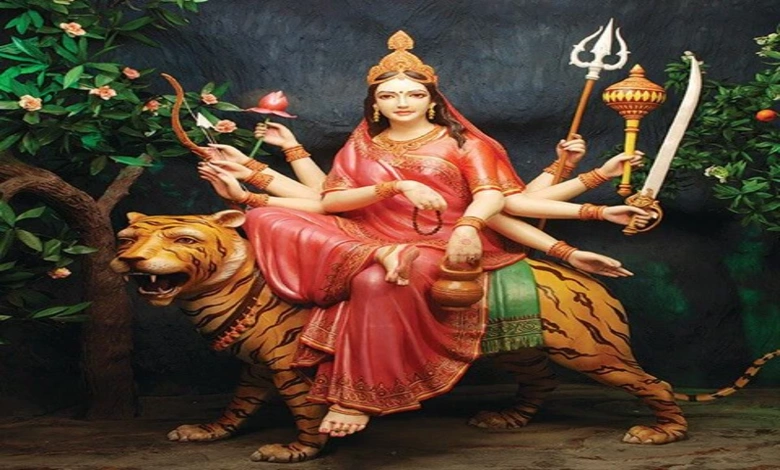As the vibrant celebrations of Shardiya Navratri continue, the fourth day falling on September 25, 2025 shifts focus to Maa Kushmanda, a radiant manifestation of Goddess Durga revered for bestowing vitality and courage. This observance, part of the nine-day festival that commenced on September 22 and culminates in Vijayadashami on October 2, invites devotees to embrace rituals that foster emotional healing and optimism.
Maa Kushmanda embodies creation and energy, her name derived from Sanskrit roots: “Ku” signifying little, “Ushma” denoting warmth or energy, and “Anda” referring to the cosmic egg. Depicted atop a majestic lioness with eight arms symbolizing her title Ashtabhuja Devi she wields a lotus, water pot, bow, and arrow in her right hands, while her left grasp a pot of nectar, rosary, mace, and discus. As the ruler of the Anahata Chakra, the heart center, she offers solace to those grappling with anxiety, depression, lingering fears, or unresolved regrets. Devotees are urged to invoke her through dedicated worship on this Thursday, seeking relief from emotional burdens and a renewed sense of purpose.
To align with the day’s sacred energy, traditional guidelines from Drik Panchang outline precise shubh muhurat for rituals. The Brahma Muhurat spans from 4:33 a.m. to 5:21 a.m., ideal for early meditations; Abhijit Muhurat runs from 11:47 a.m. to 12:35 p.m., a peak window for invocations; and Vijaya Muhurta extends from 2:12 p.m. to 3:00 p.m., perfect for concluding ceremonies. These intervals ensure the puja resonates with cosmic harmony, amplifying its spiritual potency.
Complementing the observances, yellow emerges as the day’s auspicious color, evoking sunshine and vitality. Donning attire in this cheerful shade is said to infuse the wearer with unbridled joy, warding off negativity and aligning with Navratri’s theme of upliftment. It serves as a visual reminder of Maa Kushmanda’s life-affirming essence, encouraging participants to radiate positivity amid the festivities.
The puja vidhi unfolds with mindful preparation: Awaken during Brahma Muhurat, perform a purifying bath, and slip into yellow garments to honor the goddess. Cleanse the altar meticulously, then arrange the murti or image of Maa Kushmanda centrally, encircled by fresh blooms and incense. Essential samagri includes a kalash filled with holy water, betel leaves, coconuts, turmeric, vermilion, sandalwood paste, and an array of fruits as bhog offerings particularly sweets like kheer or halwa, which symbolize her nurturing abundance. Light a ghee diya to invoke her presence, and chant mantras such as “Om Devi Kushmandayai Namah” while offering these items sequentially.
Central to the ritual is the aarti, a devotional hymn that encapsulates gratitude and surrender. Recite with fervor: “Jai ambe gauri, maiya jai shyama gauri… Teri pooja karun, teri bhakti karun, teri jai jai karun re.” Accompany it with the rhythmic clang of bells and the fragrance of camphor, drawing family members into a shared moment of reverence. Conclude by distributing prasad, reinforcing communal bonds and the goddess’s blessings for health and prosperity.
Through these time-honored practices, the fourth day of Navratri not only honors Maa Kushmanda’s transformative power but also equips devotees with tools to navigate life’s challenges with grace. As garba dances echo into the night, this worship reaffirms the festival’s core: a journey from darkness to divine light.
